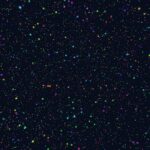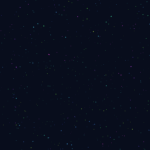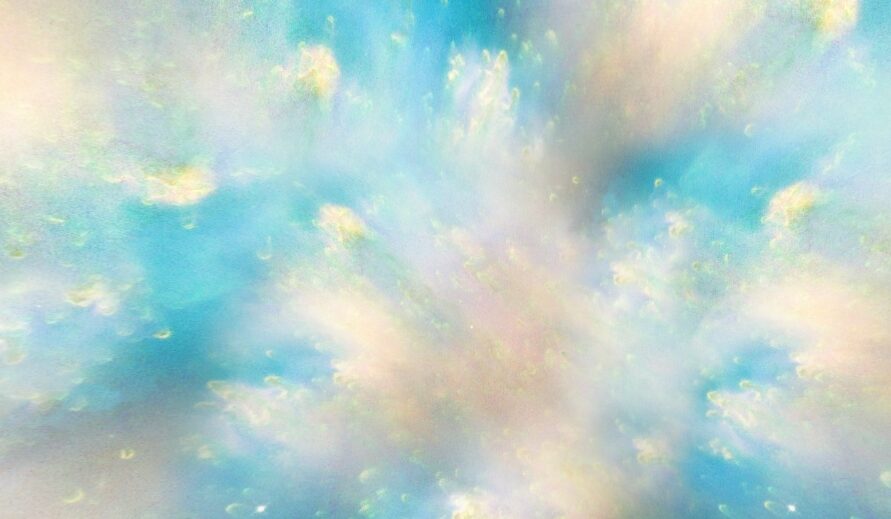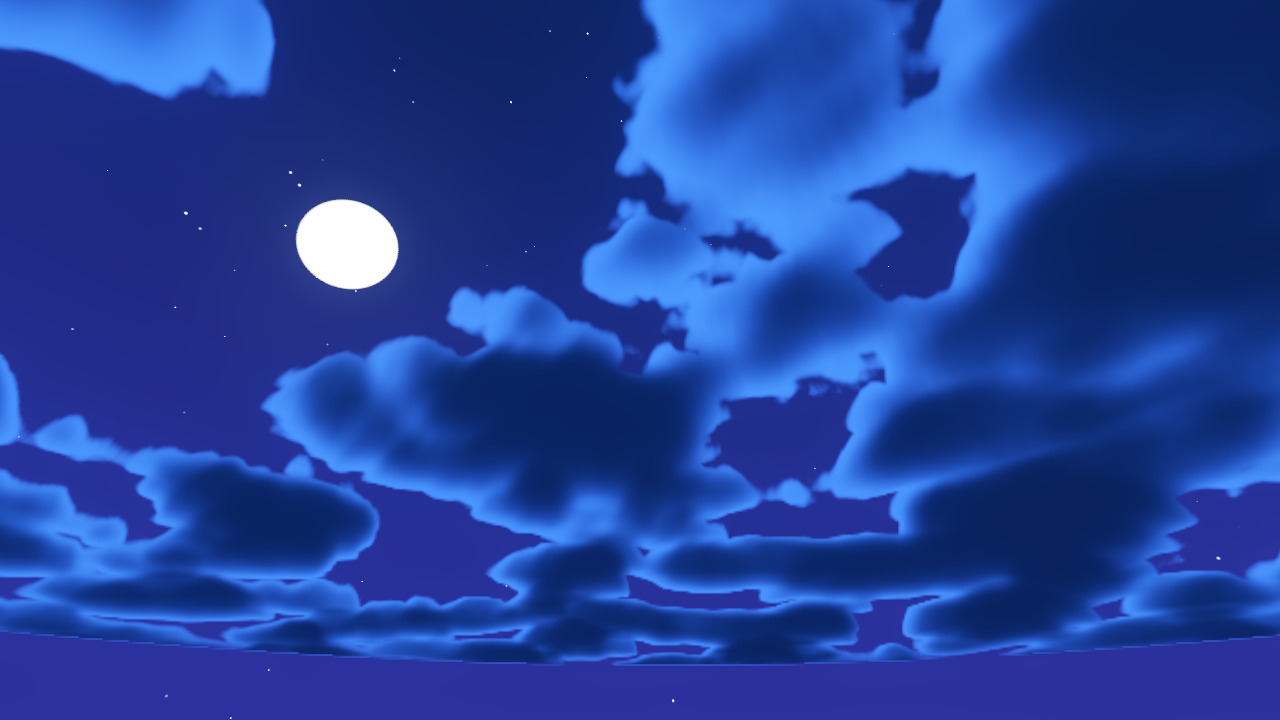Starry sky
Simple star shader using voronoi.
Inspired by this video and this shader.
Shader code
shader_type sky;
// Comment this if you don't want to use star twinke. However, if you do want to keep it,
// I suggest you to set the sky process mode to High-Quality Incremental or Real-Time,
// as star twinkling may greatly impact performance.
#define USE_TWINKLE
group_uniforms sky;
uniform vec3 sky_color: source_color = vec3(0.03, 0.05, 0.11);
group_uniforms stars;
uniform vec3 star_base_color: source_color = vec3(0.8, 1.0, 0.3);
uniform float star_hue_offset: hint_range(0., 1.) = 0.6;
uniform float star_intensity: hint_range(0., 0.2) = 0.08;
#ifdef USE_TWINKLE
uniform float star_twinkle_speed: hint_range(0.0, 2.0) = 0.8;
uniform float star_twinkle_intensity: hint_range(0.0, 1.0) = 0.2;
#endif
group_uniforms layers;
uniform float layer_scale: hint_range(0., 60.) = 20.;
uniform float layer_scale_step: hint_range(0., 40.) = 10.;
uniform int layers_count: hint_range(0, 12) = 3;
// Hue credit:
// The MIT License
// Copyright © 2024 DigvijaysinhGohil
// https://github.com/DigvijaysinhGohil/Godot-Shader-Lib
vec3 hue(vec3 input, float offset, int range_index) {
// RGB to HSV
vec4 k = vec4(0., -1./3., 2./3., -1.);
vec4 p = mix(vec4(input.bg, k.wz), vec4(input.gb, k.xy), step(input.b, input.g));
vec4 q = mix(vec4(p.xyw, input.r), vec4(input.r, p.yzx), step(p.x, input.r));
float d = q.x - min(q.w, q.y);
float e = 1.e-10;
vec3 hsv = vec3(abs(q.z + (q.w - q.y) / (6. * d + e)), d / (q.x + e), q.x);
offset = (range_index == 0) ? offset / 360. : offset;
float hue = hsv.x + offset;
if (hue < 0.) {
hsv.x = hue + 1.;
} else if (hue > 1.) {
hsv.x = hue - 1.;
} else {
hsv.x = hue;
}
// HSV to RGB
vec4 k2 = vec4(1., 2./3., 1./3., 3.);
vec3 p2 = abs(fract(hsv.xxx + k2.xyz) * 6. - k2.www);
vec3 rgb = hsv.z * mix(k2.xxx, clamp(p2 - k2.xxx, 0., 1.), hsv.y);
return rgb;
}
// Voronoi method credit:
// The MIT License
// Copyright © 2013 Inigo Quilez
// https://www.shadertoy.com/view/ldl3Dl
vec3 hash(vec3 x) {
x = vec3(dot(x, vec3(127.1,311.7, 74.7)),
dot(x, vec3(269.5,183.3,246.1)),
dot(x, vec3(113.5,271.9,124.6)));
return fract(sin(x) * 43758.5453123);
}
vec2 voronoi(in vec3 x){
vec3 p = floor(x);
vec3 f = fract(x);
float res = 100.;
float id = 0.;
for (float k = -1.; k <= 1.; k += 1.) {
for (float j = -1.; j <= 1.; j += 1.) {
for (float i = -1.; i <= 1.; i += 1.) {
vec3 b = vec3(i, j, k);
vec3 r = vec3(b) - f + hash(p + b);
float d = dot(r, r);
if (d < res) {
res = d;
id = dot(p + b, vec3(0., 57., 113.));
}
}
}
}
return vec2(sqrt(res), id);
}
void sky() {
COLOR = sky_color;
for (int i = 0; i < layers_count; i++) {
vec3 pos = EYEDIR * (layer_scale + float(i) * layer_scale_step);
vec2 layer = voronoi(pos);
vec3 rand = hash(vec3(layer.y));
#ifdef USE_TWINKLE
float twinkle = sin(TIME * PI * star_twinkle_speed + rand.x * TAU);
twinkle *= star_twinkle_intensity;
float star = smoothstep(star_intensity + star_intensity * twinkle, 0., layer.x);
#else
float star = smoothstep(star_intensity, 0., layer.x);
#endif
vec3 star_color = star * hue((COLOR + star_base_color), rand.y * star_hue_offset, 1);
COLOR += star_color;
}
}








Amazing. At first I was not sure I wanted so much hue variation, but the shader parameters are great. Very flexible and pretty.
Thank you very much.